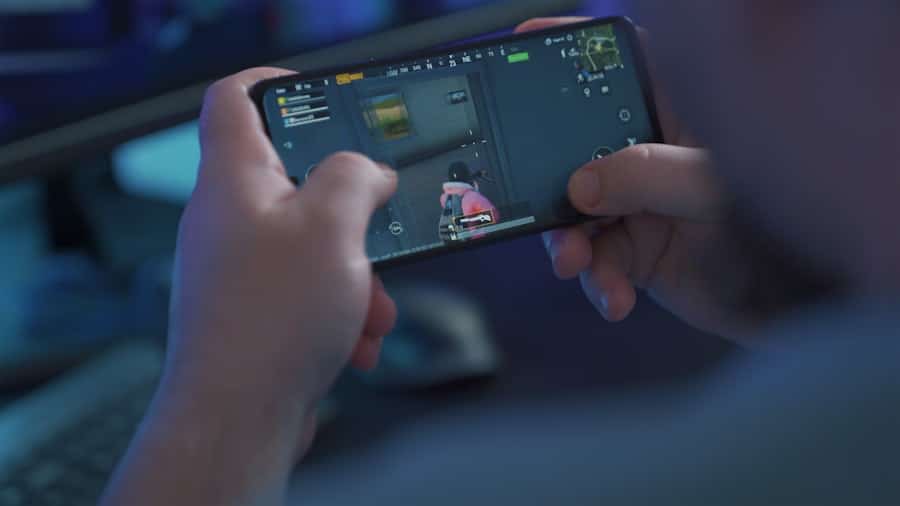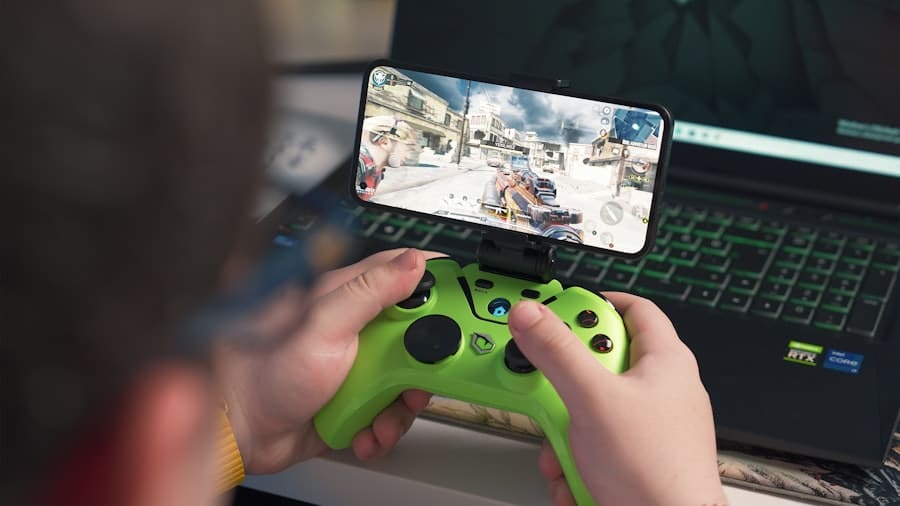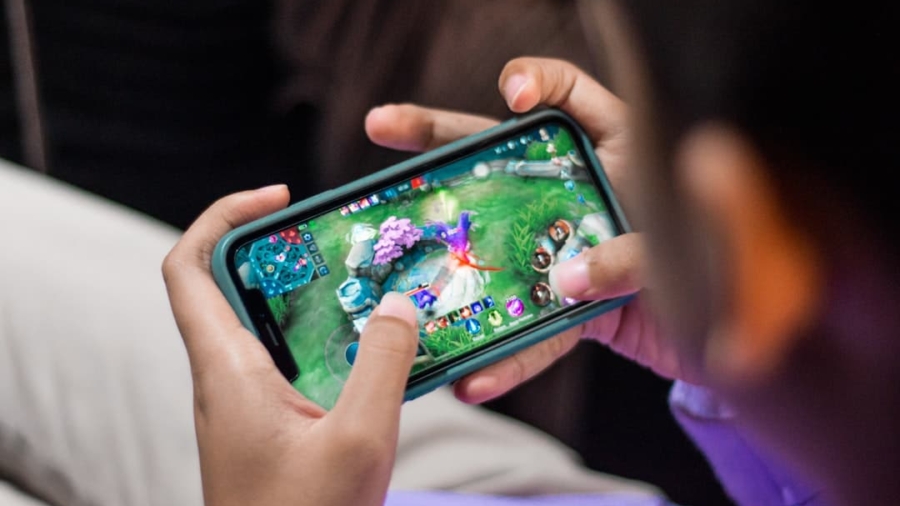The advent of 5G technology marks a significant leap in mobile telecommunications, promising to revolutionize how we connect, communicate, and consume digital content. Unlike its predecessors, 5G is designed to deliver ultra-fast data speeds, reduced latency, and the ability to connect a vast number of devices simultaneously. This next-generation network operates on a higher frequency spectrum, which allows for greater bandwidth and faster data transmission rates.
With theoretical speeds reaching up to 10 Gbps, 5G is set to transform various sectors, including healthcare, transportation, and entertainment. One of the most exciting implications of 5G technology is its potential impact on mobile gaming. As mobile devices become increasingly powerful and capable of handling complex graphics and real-time interactions, the need for a robust network infrastructure becomes paramount.
5G addresses this need by providing the low latency and high-speed connectivity required for seamless gaming experiences. This technological evolution not only enhances existing mobile games but also paves the way for innovative gaming formats that were previously unimaginable.
Key Takeaways
- 5G technology is the next generation of mobile network connectivity, promising faster speeds, lower latency, and increased capacity.
- Enhanced mobile gaming experience with 5G includes smoother gameplay, reduced lag, and improved graphics and visual effects.
- Cloud gaming and 5G go hand in hand, allowing gamers to stream high-quality games without the need for expensive hardware.
- Augmented Reality (AR) and Virtual Reality (VR) in mobile gaming are greatly enhanced with 5G, offering more immersive and realistic experiences.
- Multiplayer gaming with 5G enables seamless and lag-free online gaming with larger player counts and more complex game modes.
Enhanced Mobile Gaming Experience with 5G
The enhanced mobile gaming experience facilitated by 5G technology is characterized by several key improvements that significantly elevate gameplay. One of the most notable advancements is the reduction in latency, which is the time it takes for data to travel from the player’s device to the game server and back. With 5G, latency can drop to as low as one millisecond, compared to the 20-30 milliseconds typical of 4G networks.
This near-instantaneous response time is crucial for fast-paced games where split-second decisions can determine victory or defeat. Moreover, the increased bandwidth provided by 5G allows for richer graphics and more complex game environments. Developers can create visually stunning games with high-resolution textures and intricate details without worrying about lag or buffering issues.
For instance, games that incorporate advanced graphics engines can now run smoothly on mobile devices, providing players with an immersive experience akin to that of console or PC gaming. The combination of low latency and high bandwidth enables developers to push the boundaries of mobile gaming, resulting in more engaging and interactive gameplay.
Cloud Gaming and 5G

Cloud gaming represents a paradigm shift in how games are delivered and played, allowing users to stream games directly from remote servers rather than relying on local hardware capabilities. This model has gained traction in recent years, but its full potential can only be realized with the advent of 5G technology. The high-speed connectivity and low latency offered by 5G networks make cloud gaming a viable option for mobile gamers who may not have access to high-end gaming devices.
With 5G, players can enjoy graphically intensive games without the need for expensive consoles or gaming PCs. Services like Google Stadia, NVIDIA GeForce NOW, and Xbox Cloud Gaming leverage the capabilities of 5G to provide seamless streaming experiences. For example, a player could start a game on their smartphone during their commute and continue playing on a tablet or smart TV at home without any noticeable drop in performance.
This flexibility not only enhances user experience but also democratizes access to high-quality gaming content.
Augmented Reality (AR) and Virtual Reality (VR) in Mobile Gaming
The integration of augmented reality (AR) and virtual reality (VR) into mobile gaming is another area where 5G technology plays a transformative role. AR games like Pokémon GO have already demonstrated the potential of blending digital elements with the real world, but the experience can be significantly enhanced with the capabilities of 5G. The low latency and high data transfer rates enable real-time interactions between virtual objects and the physical environment, creating a more immersive experience for players.
Similarly, VR gaming requires substantial bandwidth to deliver high-quality visuals and maintain a smooth frame rate. With 5G, mobile VR experiences can become more accessible as users can stream VR content directly to their devices without the need for cumbersome cables or powerful local hardware. This opens up new possibilities for social gaming experiences in virtual environments where players can interact with each other in real-time, regardless of their physical location.
The combination of AR and VR with 5G technology is poised to redefine how players engage with games, making them more interactive and socially connected.
Multiplayer Gaming and 5G
Multiplayer gaming has long been a staple of the gaming community, allowing players to connect and compete with others around the globe. However, traditional multiplayer experiences often suffer from issues such as lag and disconnections due to network limitations. The introduction of 5G technology addresses these challenges by providing a stable and fast connection that enhances multiplayer interactions.
With 5G’s low latency, players can engage in competitive matches without experiencing delays that could affect their performance. This is particularly important in fast-paced genres such as first-person shooters or battle royale games, where every millisecond counts. Additionally, the ability to connect a larger number of devices simultaneously means that more players can join a single game session without compromising performance.
This capability fosters larger online communities and enables developers to create expansive multiplayer worlds that were previously unattainable.
Impact of 5G on Mobile Gaming Industry

The impact of 5G technology on the mobile gaming industry is profound and multifaceted. As developers harness the power of this new network standard, we are likely to see an influx of innovative game designs that leverage enhanced graphics, real-time interactions, and immersive experiences. The potential for cloud gaming will also reshape business models within the industry, as subscription services become more prevalent and accessible to a broader audience.
Moreover, the rise of 5G could lead to increased investment in mobile gaming from both established companies and new entrants looking to capitalize on this burgeoning market. As mobile devices become more capable and network infrastructure improves, we may witness a shift in consumer preferences toward mobile gaming over traditional console or PC gaming. This evolution could result in a more diverse range of game genres and styles tailored specifically for mobile platforms.
Opportunities and Challenges of 5G in Mobile Gaming
While the opportunities presented by 5G technology in mobile gaming are vast, there are also challenges that developers and consumers must navigate. One significant challenge is the need for widespread infrastructure development to support 5G networks. Although major cities are beginning to see the rollout of 5G services, rural areas may lag behind, creating disparities in access to high-speed connectivity.
This uneven distribution could limit the potential audience for certain games or services that rely heavily on 5G capabilities. Additionally, as mobile gaming becomes increasingly reliant on cloud services and online connectivity, concerns regarding data privacy and security will come to the forefront. Players may be apprehensive about sharing personal information or payment details when engaging with cloud-based platforms.
Developers will need to prioritize robust security measures to build trust with their user base while ensuring compliance with regulations governing data protection.
The Evolution of Mobile Gaming with 5G
The evolution of mobile gaming driven by 5G technology represents a significant milestone in the gaming landscape. As we move forward into an era characterized by ultra-fast connectivity and immersive experiences, players can expect a new level of engagement that transcends traditional boundaries. From enhanced graphics and cloud gaming capabilities to AR/VR integration and seamless multiplayer interactions, 5G is set to redefine what it means to play games on mobile devices.
As developers continue to explore the possibilities offered by this technology, we are likely to see an explosion of creativity within the industry. The convergence of mobile gaming with other technological advancements will not only enhance gameplay but also foster new social connections among players worldwide.
As mobile gaming continues to evolve with the advent of 5G technology, it opens up new possibilities for immersive experiences and real-time interactions. This transformation is not only limited to gaming but also extends to various devices that enhance user experience.


